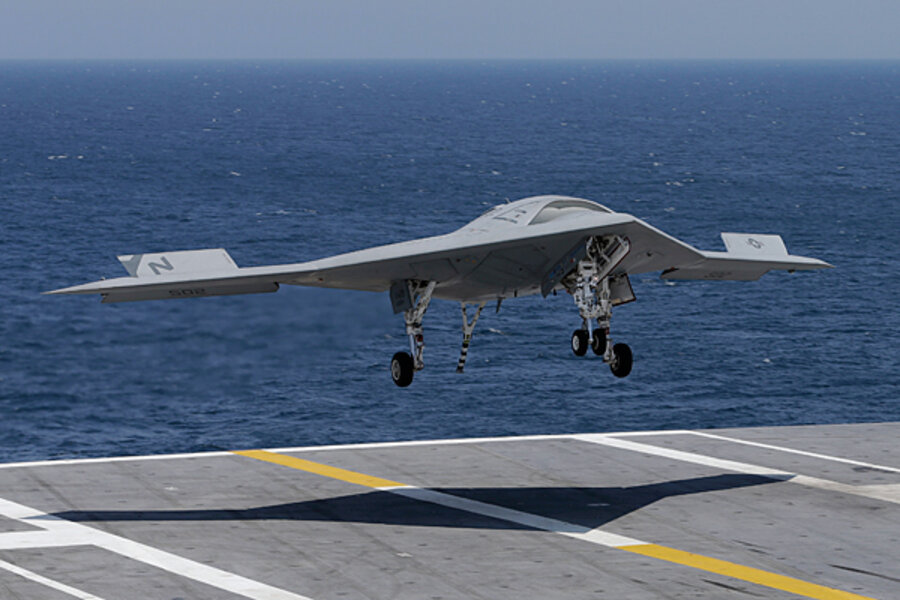Drone landing on aircraft carrier opens new possibilities for Pentagon
| Washington
It was the US military’s latest foray into the realm of robotic warfare: The first time an automated drone has landed on an aircraft carrier.
The event was monumental enough to draw some of the top US military officials from the Pentagon to the deck of the USS George H.W. Bush off the coast of Virginia to watch.
“It’s not often that you get a chance to see the future, but that’s what we got to do today,” Secretary of the Navy Ray Mabus said after the drone deployed its tail hook and stuck its landing. “This is an amazing day for aviation.”
The Navy’s successful landing Wednesday of its bat wing-shaped X-47B unmanned combat air vehicle (known in the latest military parlance as a UCAS) was “historic,” says Peter Singer, director of the Center for 21st Century Security and Intelligence at the Brookings Institution in Washington.
The landing of any aircraft on an aircraft carrier “is arguably one of the most difficult, challenging tasks for a human pilot to perform,” he adds. “For an unmanned system to do it – and to do it in a remote operation – is a really big deal.”
The question now is how the Navy will use it. “Now that we’ve proven that unmanned systems can take off and land on an aircraft carrier, we have to answer, what will be their role?” Mr. Singer says.
The first Predator and Reaper drones, now used in Afghanistan, were envisioned as scouting tools. But it was not long before the US military “moved [the drone] into a far more lethal role,” he says.
The X-47B could be an intelligence, surveillance, and reconnaissance (ISR) vehicle “with light-strike capabilities,” he adds, or it could be paired with manned aircraft.
What top military leadership decides will form the crux of “naval doctrine moving forward,” Singer says.
What is clear is that the UCAS “can fly into space where you wouldn’t want to send a manned system, and it has a long [flight] duration, which allows you to do a lot more things,” he notes.
These are aspects that may be competitive with the perpetually overpriced and under-delivering F-35 stealth fighter jet, he says.
Indeed, the X-47B may find that it is competitive with the F-35 fighter jet in terms of its reach and abilities at a time when the service’s budget for unmanned aerial vehicles is being cut by 24 percent.
But the budget pluses of the drones – and the great expense of the F-35 – may further drive the military’s move toward high-performing drones.
Such moves are already happening in other realms. The US Marines are using robotic helicopters for cargo delivery in Afghanistan, for example. That could be a cue to say, “Wait, we can do those things at sea,” Singer says.
Then the question becomes, he adds, “Is technology ending the central role of humans at war and at sea?”





